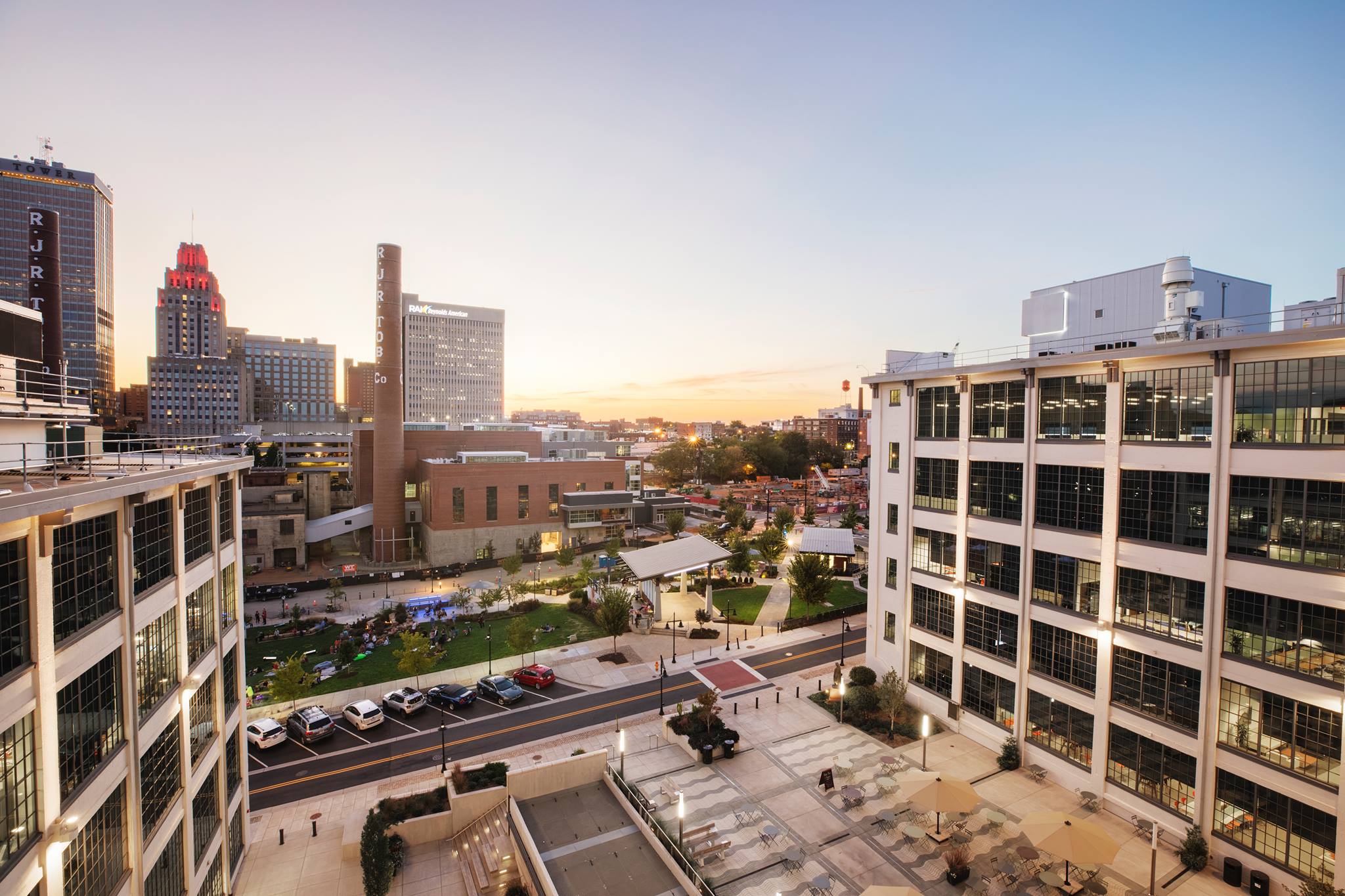Innovation Quarter’s impact on the economy in and surrounding Winston-Salem and Forsyth County reached more than $1.66 billion in 2022, according to a recent study conducted by TEConomy Partners, a leading provider of advanced economic and functional impact studies for a broad range of institutions, industry sectors, and developments.
The study demonstrates the positive impact Innovation Quarter has had on the city of Winston-Salem and the region and reinforces the commitment made by Atrium Health Wake Forest Baptist and Wake Forest University School of Medicine — the academic core of Advocate Health—to innovation and economic development here.
Study Parameters
While Innovation Quarter is comprised of 3,883 people working full-time across all tenants as of the latest 2022 figures, the nature of those jobs within specific sectors create a “ripple effect” throughout the local and regional economy, accounting for an additional 4,427 indirect/induced jobs for a total of 8,310 total employment generated or induced by the district.
To estimate these economic “ripple effects” that originate from within the organizations, firms, and employment base of Innovation Quarter, TEConomy utilized an input-output model. This technique models economic relationships between sectors and how Innovation Quarter expenditures within the regional economy flow through suppliers and vendors as additional inputs are purchased and through employees, faculty, staff, and other Innovation Quarter-based workers who spend their wages in this economy.
This includes direct effects (people employed by tenants in the iQ), indirect effects (how and where businesses in the iQ purchase goods and services) and induced effects (how wages are spent and induce other jobs within the regional economy).
“As a thriving public-private partnership and a major innovation engine of Wake Forest University School of Medicine, it’s important to measure and communicate Innovation Quarter’s impact on the local and regional economy,” said Lindsey Schwab, director of community relations. “This snapshot of our impact as a district of how far we have come gives us momentum to continue building the kinds of partnerships and creating more positive growth in the years to come.”
The Innovation Quarter’s economic impact news comes on the heels of Atrium Health and Wake Forest University School of Medicine breaking ground with Wexford Science + Technology on a “sister” innovation district in Charlotte called The Pearl. Together, The Pearl and Innovation Quarter will create a regional corridor of collaboration and innovation with lasting positive economic and functional impacts.
The total amount invested to date in the Innovation Quarter and surrounding area is $876 million. That includes $650.8 million in private investment from Wake Forest University Health Sciences, Wexford Science + Technology and private developers, another $157.1 million in public investment from federal, state and local governments and $68.1 million in investment immediately adjacent to Innovation Quarter proper, including the Goler District, Plant 64 Apartments and Lofts and the Winston Factory Lofts.
“This economic impact study validates decades of work by a broad range of partners in reimagining Winston-Salem’s future,” says Mark Owens, President and CEO of Greater Winston-Salem, Inc. “The development of this district has been one of the most important projects that put Winston-Salem on a growth trajectory. It not only encourages investment within the district itself – it has also redefined the value proposition of Winston-Salem as a whole being an ideal place to locate.”
Functional Impact Analysis
TEConomy also performed a qualitative “functional impact analysis” to quantify the ways in which Innovation Quarter is making a difference in and around the Winston-Salem innovation ecosystem. Through a process of interviewing key stakeholders, partners, tenants and neighbors, TEConomy identified seven key areas in which Innovation Quarter is deeply investing time and resources in ways that are making a difference:
- Awareness and Outreach: Building a platform for regional innovation activities, marketing efforts, and thought leadership.
- Education and Workforce: Strengthening the economy by providing skills, education, and connections for all individuals
- Inclusive Growth: Ensuring that all individuals have an opportunity to connect to innovation- based economic development.
- Partnerships and Collaboration Implementing value-added partnerships that allow key stakeholders to “Collaborate to Compete”
- Research and Development: Growing the knowledge base through core research centers and other corporate and university R&D activity.
- Entrepreneurial Support Engines: Offering services and spaces such as incubators, accelerators, co-working, mentorship, networking, etc.
- Placemaking: Creating public spaces that promote people’s health, happiness, and well-being.
To date, the Innovation Quarter is made up of 2.1 million square feet, more than 4,500 people working full-time, part-time or as contractors, 115 companies or institutions and more than 2,000 degree-seeking students.



